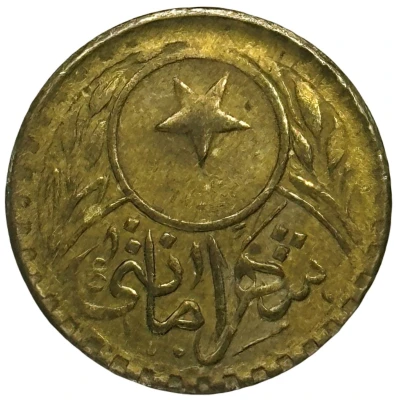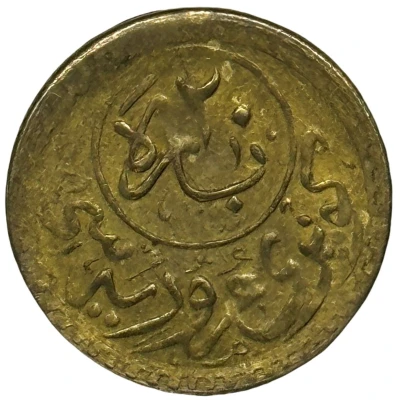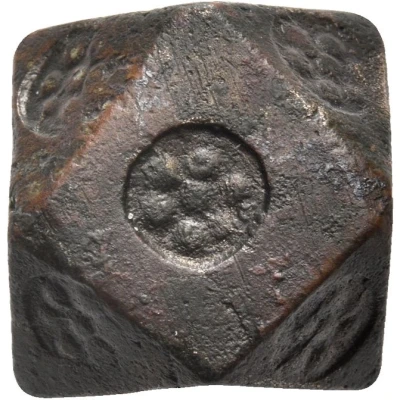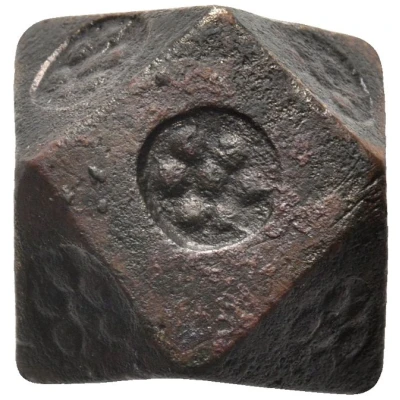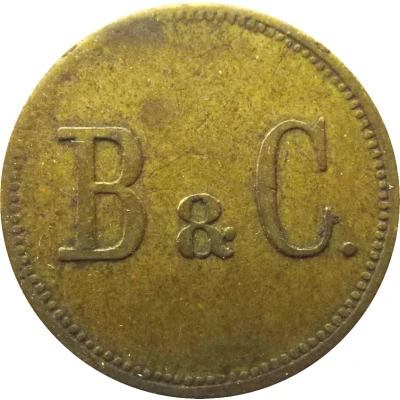
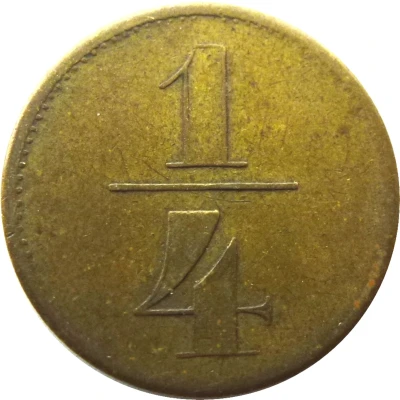

© Willem63 (CC BY-NC-SA)
¼ Piastre - Jaffa (B and C) ND
| Brass | 2.5 g | 20.1 mm |
| Location | Ottoman Empire |
|---|---|
| Type | Trade tokens › Business tokens |
| Value | ¼ Piastre |
| Composition | Brass |
| Weight | 2.5 g |
| Diameter | 20.1 mm |
| Thickness | 1.1 mm |
| Shape | Round |
| Technique | Milled |
| Orientation | Medal alignment ↑↑ |
| Demonetized | Yes |
| Updated | 2024-11-14 |
| Numista | N#308122 |
|---|---|
| Rarity index | 100% |
Reverse
Script: Latin
Lettering: ¼
Edge
Plain
Comment
B & C = Breisch & CoThe tokens were created as a substitute for "small money" - for use in everyday life and a number of reasons led to their issuance:
First, in those days, both under Turkish rule and later, under British rule, there was a considerable shortage of "small money" which severely limited the possibilities of trade and use of various services.
Second, a lot of money came to the community in the Land of Israel from donations and family members from overseas and the exchangers in the country charged a large fee for exchanging the money.
Third, the tokens were also used as a means of payment for the Arab workers who did not believe in a means of payment from paper.
The tokens were not a legal proceeding and were not issued by the authorities. Their use was within a defined geographical area and there were two main types of tokens:
1. Community Tokens - Tokens issued by community customs and were dependent on the trust of community members in their customs that would underlie their commitment to recognizing the value of the tokens over time.
2. Private tokens donated by institutions such as hotels and private companies. Their distribution and use was limited to use only in the same business that issued them
The Templars also used community tokens because they lived in their own closed farm communities and also used B&C tokens that were a private placement to a business. Since in those days, it was one of the largest businesses in the country it is clear that both Jews and Arabs used these tokens.
B&C Abbreviation of the business name Breisch & Gesellschaft which belonged to the Breisch family The first father to settle in our country, following the arrival of the Templar sect in the colonies in Israel was Emanuel Krall Breisch who founded four generations of his family in Israel until they were deported in 1947-8. When he arrived in Israel he settled in the colony in Haifa and only in 1869 did he reach the Templar colony in Jaffa, on the ruins of the American colony established in 1866 and disappeared in 1867-8, after the American colony sold their houses established in the colony in Jaffa to the Templar sect for pennies.
Emanuel Karl bought five wooden houses from the Americans, with a partner in a colony in Jaffa, after buying the houses he returned to Germany to bring his extended family to Israel, members of the Braisch family A very magnificent structure made of local kurkar stone is located on Bar Hoffman Street at the corner of Orbach Street in Tel Aviv. The family's livelihood was based at the time on the trade-in building materials in their store, Disberg the Braish, a large store of its kind, for food products, housewares, tools, and building materials. The store was located in the area between the western entrance to the Mahmoudia Mosque in Jaffa today, Ruslan Street. Another branch of his trading house was set up by Reish in Haifa with the help of his agent Avraham Dick on Ben Gurion Boulevard. The family was one of the largest importers in the country and the owner of the Mercy tile concession from France, as soon as he received the concession he sailed three sailing ships loaded with tiles to the port of Jaffa, these red tiles star on the Templar houses in the colonies in the country. In 1917, when the country was occupied by the British by the Turks, the family was deported to Egypt. After the war, the Braish family returned to their homes in Israel, restored their businesses, and even expanded, until World War II broke out when Templars were arrested and sent to Australia.
